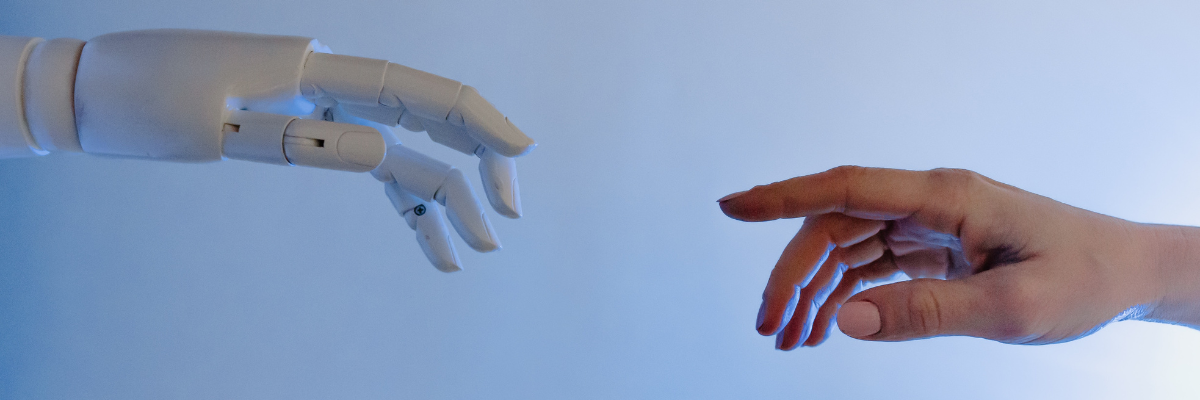FST BLOG
AI and Manufacturing Are Becoming Inseparable and It's Changing Smart Factories
- 22 July 2023
- Emily Newton

Industrial applications are increasingly using artificial intelligence (AI). You can see some of the clearest examples by looking at the merging of AI and manufacturing. Production facilities use artificial intelligence to track trends, reduce resource usage, cope with labor shortages and much more. As decision-makers scale up their AI use, they often create smart factories where most processes and equipment run with connected and highly advanced technologies.
What can today’s leaders expect by choosing AI? How are some companies already benefiting from the technology?
Manufacturers View Smart Factories as Essential for Success
A 2022 survey indicated manufacturing professionals do not just consider smart factories nice to have — they increasingly see such facilities as drivers of future success. That was the belief of 83% of respondents. Another finding was the smart factory adoption rate experienced 50% year-over-year growth. A lower barrier to entry was one of the leading factors attributed to that change.
It also helps that manufacturers felt upbeat about smart manufacturing, with 85% of respondents expressing optimism about it. Additionally, 74% of the manufacturers polled were using or planning to implement artificial intelligence.
These takeaways emphasize people frequently consider AI and manufacturing together. If manufacturers continue seeing artificial intelligence as something they must use to stay competitive, the world will progressively see more smart factories.
AI and Manufacturing Will Continue Gaining Momentum
It may seem like all the leading manufacturers are already using AI. However, a 2023 Manufacturing Leadership Council report revealed they are still in the relatively early stages of adoption. For example, 57% of manufacturers are still piloting or experimenting with AI. Twenty-nine percent turned their AI initiatives into formal plans. However, only 4% of respondents did not plan to use artificial intelligence.
Other survey questions asked respondents to envision the extent to which automation would dominate smart factories by 2030. Those results indicated 40% expected circumstances where such facilities are largely autonomous, with humans still significantly influencing operations. It is too early to predict whether that situation will happen, but the survey’s respondents indicated they know how peers respond to the increasingly common combination of AI and manufacturing.
Interestingly, 43% already felt their companies were behind competitors regarding how they use AI. Thirty percent felt their adoption levels were equal and 16% believed they were ahead of competitors. These statistics suggest even people familiar with today’s AI-driven smart factories should prepare for their continual evolution.
Smart Factories Could Attract Workers
The manufacturing industry is in the middle of a workforce crisis. A study indicated there could be as many as 2.1 million unfilled jobs in the industry within the United States by 2030. That issue has led more manufacturers to consider how to attract and keep workers. Sometimes, that means raising wages and expanding benefits packages.
In other cases, leaders may look to hiring from other countries. More than 70% of the world’s nations have data protection laws. Thus, any global recruitment efforts must include responsible information handling, including becoming familiar with the regulations in relevant countries. A 2022 study found 20% of respondents were hiring workers from abroad to fill skills gaps. Plus, 26% reported using technology to automate or enhance workflows.
Whether a manufacturer fills roles with locally sourced workers or those from abroad, focusing on AI could show new hires and candidates the respective companies are on the cutting edge. Relatedly, once people see how AI and manufacturing come together in real-life applications, many will realize the industry has come much further than they thought.
Manufacturers Intend to Increase Their AI Investments
Increased investment is one of the clearest indicators of activity within the realm of AI and manufacturing. If the industry’s leaders are ready to spend more on artificial intelligence, they likely have already seen promising results.
A 2023 study showed 63% of manufacturing leaders intend to increase their AI budgets during the year. Conversely, only 3% planned to spend less on artificial intelligence. Moreover, the top priority was to use AI to upskill their workforce.
Elsewhere, when an MIT Sloan Management Review investigation examined how companies want to use AI, data-related improvements emerged as the primary focus. For example, 82% of companies will make data modernization improvements in 2023. Some decision-makers may have felt compelled to make changes since another finding was only 24% of respondents described their organizations as data driven.
Smart factories can quickly make data collection more valuable than ever. The most progressive manufacturers often have real-time information streams for everything from equipment health to the output of individual assembly lines. AI algorithms can also reveal trends, ultimately making manufacturing leaders proactive and responsive rather than reactive and struggling to address problems.
Leaders Must Consider AI and Manufacturing Together
These findings emphasize why the people overseeing successful production facilities must pay attention to how AI could help them create competitive, smart factories. Even if they are not immediately ready to deploy the technology, now is an excellent time to explore the possibilities and identify the most feasible solutions.
Emily Newton is a seasoned industrial writer who explores the impact of technology in the industrial sector. She has over six years of experience providing insights on manufacturing and supply chain automation.
